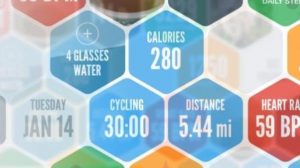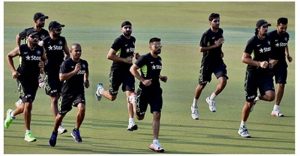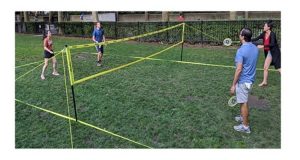
Yoga for Beginners: Yoga is the answer for all your physical, mental and spiritual needs. Here are various poses to help you get started.
The good thing about Yoga is that you can start small, even five minutes a day is okay to relax and work your way into it. Soon, you won’t feel as if you’re wasting time, because you will be making more time for yourself.
However, in order to really experience the benefits of yoga, one should be regular with Yoga practice.
Easy Yoga Poses For Beginners
Here are some easy yoga poses that beginners can start practicing for general health, well-being, and even for weight loss and flat abs.
Read: Popular types of Contemporary Yoga
Trikonasana (Triangle pose)

Chair pose (Utkatasana)

Plank Pose (Phalakasana)

Bow pose (Dhanurasana)

Bridge pose (Setu bandha Sarvangasana)

Boat pose (Naukasana)

Upwards dog / Cobra pose (Bhujangasana)

Child’s pose (Balasana)

Corpse Pose (Shavasana)

Yoga is always best learnt with a qualified, respectable teacher, in a location where you can be assisted, should physical difficulties arise. But then, attending a class is not always possible for some people due to a busy home, work or social life. That is where celebrity DVDs have their uses, and serve beginners’ well. As long as you warm up and cool down properly (to minimize risk of injury), you can use at-home Yoga DVDS for a quick yoga boost, if you can’t make a class.
Nadi Shodhana Pranayama (Breathing)
Health benefits of Nadi Shodhana Pranayama.
Some time back, the guys from ‘Art of Living’ had come to our residential complex and conducted a workshop on meditation; it was there I learnt about this exercise.
Its a breathing exercise, quite useful, and you usually do this before moving on to other forms of meditation.
So what does Nadi Shodhana Pranayam mean?
- Nadi = energy channel
- Shodhan = cleaning
- Pranayama (Pranayam) = Breathing technique.
Nadis are the energy channels in our body that could get obstructed due to several reasons – stress, toxicity, physical and mental trauma, unhealthy lifestyle, and so on.
The Nadi Shodhan pranayama is a breathing technique that helps clear these blocked energy channels, thus calming the mind.
Here is more about Nadi Shodhan Pranayama and its advantages. #YogaDay pic.twitter.com/rx7gmRTlat
— Narendra Modi (@narendramodi) June 18, 2017
This technique is also known as Anulom Vilom pranayama.
Steps to do Nadi Shodhan.
- Sit comfortably with your back straight and shoulders relaxed. Place your left hand on the left knee with the palms open and facing you
- Placing the fingers of your right hand:
- The thumb is used to open-close the right nostril.
- The index and middle fingers have to be placed in between the eyebrows.
- The ring and little finger are to be kept on the left nostril (to open-close the left nostril)
- Here’s how to complete one round of Nadi Shodhan pranayama.
Close the right nostril using the thumb and breathe out gently through the left nostril. Now breathe in from the left nostril. Close the left nostril gently with the ring finger and little finger. Lift the right thumb to open the right nostril, breathe out from the right. Breathe in from the right nostril, and then exhale from the left. - Continue inhaling and exhaling from the alternate nostrils, for a few minutes
Practicing Nadi Shodhan Pranayama even for a few minutes will keep you calm and peaceful. It helps relax your mind and prepares it to enter a meditative state.
Surya Namaskar

Surya Namaskar (the Hindu pushups) is a complete workout for the human body, it is a comprehensive exercise form without need for any equipment.
Surya Namaskar is a complete workout fr the physical system,a comprehensive exercise form without any need fr equipment.#KaifKeFitnessFunde pic.twitter.com/snJW0SgIXM
— Mohammad Kaif (@MohammadKaif) December 31, 2016
Yoga for Men
Its very common for men to feel that a type of exercise that is refined, involves too much stretching and breathing, is not high-impact, most be suited for women.
However, that’s not the truth.

In reality, yoga is an exercise regime that can suit everyone, and can be massively beneficial for men.
Even the muscle men who enjoy lifting weights can benefit from doing yoga, so it’s definitely NOT “just for women” (in ancient times, only men were permitted to do yoga).
Myths – that yoga is an easy workout, it’s too touchy, it’s not made for men’s bodies — persist among men that makes the practice largely followed by women.
Then there are many who assume that you need to be flexible in order to practice yoga. Not true.
In fact, it works the other way around, yoga improves your flexibility and makes you more agile. In truth, although men are less flexible than women, a few classes of yoga will get you into much better shape in general.
Here are some Awesome Yoga Poses For Men: Standing Forward Fold, Warrior One, Chair Pose, Downward Facing Dog, Upward Facing Dog, Boat Pose, Butterfly Pose, Half Pigeon, Bridge Pose, Reclining Hand To Big Toe.
Yoga for Plus Sized Women and Men
Here are some plus-size women who demonstrate that size is no barrier to mastering complex yoga moves.

Dolly Singh, a 40-year old Mumbai woman, tried everything like Pilates, running, zumba but finally settled in for Yoga.
Today, Dolly teaches yoga to people of all body types and feels she can better understand what plus-sized people experience when they perform asanas.
If my teacher doesn’t have a belly, how will s/he know what the problems are of having a big belly. “I’m a big busted person and if the teacher isn’t, how will s/he understand that when I’m doing a Halasana (plough pose) I’m almost choking to death!”
Maria Odugba, yet another Yoga instructor, is challenging stereotypes, and shows that Yoga is for all body shapes and sizes. Of all her yoga poses we checked on Odugba’s Instagram profile, this one looked very challenging for a plus-size, but she’s nailed it here.
More Yoga Exercises
More Yoga Exercises for Abs
Yoga helps in tightening and toning of areas that are very hard to reach, such as the stomach area. Here are some exercises which could help reduce belly fat.
Exercise 1
- Use a towel or a mat on the floor. Lie down with your back flat on the mat on the ground.
- Lift your knee and bend it towards your chest.
- Hold both your knees with your hands.
- If possible try to touch your knees with your stomach and if possible your nose to touch your knees. It may not happen at the first few attempts, but keep trying and you will get to it eventually.
- Hold the position for 30 seconds and keep breathing slowly.
- Now slowly leave your hand and go back to the original position.
Exercise 2
- Stand up straight with your feet slightly apart from each other (approx 1 feet)
- Raise one arm straight up and bend your body from the waist towards the side as much as possible.
- Return to your normal position and repeat the exercise with the other arm.
All these above aasanas are extremely good for reducing belly fat. However you should not undertake any of these exercises without consulting a yoga expert or a physician.
Yoga for Full Body Workout
Most youngsters (and those who’re into gymming) may not appreciate the importance of yoga, if they have never done it seriously before. However, a good yoga workout can be quite effective for full body fitness and health, besides making your body a bit more flexible.
Kundalini Yoga is a great science to help with full body fitness and health. These exercises don’t just promote flexibility, but are also excellent for training your most important muscles.
If you’ve been lifting weights for years (and not happy with the results, or with your flexibility, or with the muscle imbalance), you should definitely consider Yoga. Its a great way to get fit, and also gain strength and muscles, without having to hit the gym.
Yoga at the Workplace
For those who’re unable to spare time (an hour a day to practice yoga), here are a few poses to practice before and after work.
- Try to pigeon pose to alleviate tension in the hips, de-stress and connect with your breath
- Seated meditation and deep breathing can get also you through a long day.
- Anything that incorporates the element of balance, such as the tree pose.
Yoga Helps, but Injuries on the Rise in Older Participants
Although Yoga injuries are relatively rare, injuries do occur and they tend to rise with the age of the participant. Most yoga-related injuries are injuries to the trunk, and sprains or strains.
Experts say that Yoga is harder and more demanding than what some people believe. As with any sport or physical activity, it is important to be sure you are physically capable of the undertaking. If you’re over 65, its important to talk to your physician before taking up yoga, and to recognise your personal limitations.
The incidence of fracture was highest in the older population, some three times higher than in the younger population.
Yoga has become popular over the years and its possible that inexperienced participants may not have taken the necessary precautions to avoid injury.
One should take a more realistic view of their own abilities, and one needs to understand that some poses might be too challenging and inappropriate. A qualified, certified yoga instructor can help you with that assessment and is essential to a safe experience.
Yoga FAQs for Beginners
Here are some frequently asked questions on yoga for beginners.
Age limit for doing yoga?
There is no upper age limit for yoga practice. You can start even at 30 or 60 years of age and can continue up to 100 years or more. Children can start yoga from 12 years of age.
Should you be completely fit before starting yoga?
A young person with no known medical history can take up any yoga pose or asana.
But if you are having a medical problem, consult your doctor/ yoga instructor for the yoga asanas appropriate to your health. Yoga exercises for relaxation and pranayama like shava asana, bal asana, yoga nidra, rhythmic breathing and alom vilom can be generally done by all irrespective of age and health (if you cannot sit, you can do all the above mentioned asanas lying down).
Can you start yoga practice by online instructions or reading books?
Yes, you can start with pranayama and easy yoga poses. When you start doing yoga you can seek help to select your yoga sequence in accordance with your age, physical condition and medical history. Start with asanas which you feel are comfortable for you.
Why moderation is recommended in yoga?
In yoga practice, ultimate aim is to rein in the wandering mind. You have to look for happiness inwards. Therefore, it is recommended not to be a slave of habits. Do not go overboard for anything and practice moderation.
What is the ideal time for doing yoga?
Ideal time for yoga is one to two hours before sunrise. You may do yoga in the evening provided you have not eaten anything for last 3 to 4 hours. It is best to do yoga empty stomach, but you can have lime juice or tea 30 minutes prior to yoga practice.
How much time does one need to spare for yoga?
Generally you should spare 30 minutes to one hour for yoga. After some time, you will feel so good while doing yoga that you will enjoy it and will forget about time.
Yoga Class Etiquette for New Students

Here are some basic yoga class etiquette and manners for new students when going to yoga classes and studios (some of these tips are actual common sense and courtesy).
Yoga is done bare feet so remove Your Shoes
Unlike other group exercises, Yoga is practiced in bare feet, so take off your shoes and socks as well. Do not put shoes on your yoga mat. Yoga studios usually have space near the door where you can leave your shoes.
Keep your Phone in Silent mode
Keep your phone in the locker, but if you think it could get stolen, you may carry it (along with your wallet and other valuables) into the studio. Make sure its in the silent mode.
Put the Props back in place after the Class
If you’ve blocks or straps for the class, place them back the way you found them before the class. Fold your blanket; don’t just drop it in a heap. If you borrowed a mat from the studio, wipe it before placing it back. Best is to bring your own mat!
Know your limits and respect it
Respect your limits, you don’t have to match others in the class. Work from where you are, not where you think you should be. Never force to hold or attain a pose. Ask for a simpler pose and practice your moves with control.
Yoga is primarily taught in silence, with only the Yogi (the person leading the class) doing the talking. However, if you’re having any questions or queries – and particularly if you’re feeling uncomfortable – feel free to ask for guidance. Be polite, and within time you will adapt to the natural rhythm of the class, and fit in just fine.









Leave a Reply